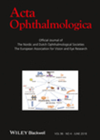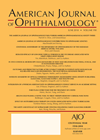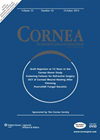You searched for "fluorescein"
Does Ozurdex affect perfusion status in vein occlusion?
1 October 2018
| Eulee Seow
|
EYE - Cataract, EYE - Refractive
|
intravitreal dexamethasone implant, peripheral nonperfusion, retinal vein occlusion, wide-field fluorescein angiography
Ozurdex (intravitreal dexamethasone implant) has been approved by National Institute of Health & Care Excellence (NICE) for treatment of patients with macular oedema associated with vein occlusion. This study looks at the change in peripheral perfusion status in patients with...
Low dose steroids for ocular dry eye disease in graft vs. host disease
This double-masked randomised clinical trial compared the response of dry eye disease (DED) to treatment with topical steroids in patients with and without graft vs. host disease (GVHD). Forty-two patients in a single centre (n=21 with and n=21 without GVHD)...Squamous metaplasia of conjunctival epithelial cells with soft contact lens wear versus non-lens wearers
Conjunctiva is composed of non-squamous epithelial cells interspersed with goblet cells, which is a secretory epithelium. Squamous metaplasia is a transformation to non-secretory epithelium, ‘keratinised’ and enlargement of the conjunctival non-goblet cells and relatively shrunken nuclei are seen on impression...Does lower eyelid entropion repair alter corneal topography?
The authors aimed to analyse the corneal morphology before and after advancement of posterior lower eyelid retractors (LERs) alone or in combination with a lateral tarsal strip (LTS) for lower eyelid involutional entropion. Retrospective analysis of 24 consecutive elderly patients...OCTA in angioid streaks
1 February 2019
| Saruban Pasu
|
EYE - Vitreo-Retinal
This paper reports on the optical coherence tomography angiography (OCTA) features of choroidal neovascularisation (CNV) secondary to angioid streaks and the ability to predict CNV activity. A total of 38 eyes of 19 patients were included in the study. Thirty...
Dry eye disease treatments come to the fore at 100%
Guidance on setting up, or enhancing, a Dry Eye disease clinic within the practice will be freely available from OSA members exhibiting at 100% Optical: 1–3 March. The ability to diagnose and treat a major irritation for many is winning...Resurfacing the ocular surface
1 April 2016
| Harminder Dua (Prof)
|
EYE - Cornea
The ocular surface (OS) is an anatomical and functional unit made of the tear film, the conjunctival, limbal and corneal epithelium, the lacrimal, mucous and meibomian glands and the lids and blink reflex. The tear film is composed of a...
From novice to overnight on-calls: developing an ophthalmology bootcamp to ease the learning curve for new trainees
4 December 2023
| Daniel Beck, Peter Wilson
|
EYE - General
Introduction My first ophthalmology on-call was nine years ago and it was a fairly traumatic experience. I was an FY2 in a Welsh district general hospital and I was on my own – at least, that’s how it felt to...
25 years of OCT
David Huang first described optical coherence tomography (OCT) in 1991, in his seminal paper on the subject in Science. This method developed the work of others on ophthalmic interferometry, which essentially showed that measuring reflected light could be used to...Hot debates in medical retina and imaging: Perspectives from the Controversies in Ophthalmology 2020 virtual conference
Controversies in medical retina and imaging were debated during the Controversies in Ophthalmology 2020 virtual conference held during two mid-day scientific sessions on 27 and 28 March 2020. The author recounts key perspectives and presents viewpoint recommendations from the Vision...The past and the future for paediatric ophthalmology
1 June 2018
| Jane Ashworth, Chris Lloyd (Prof)
|
EYE - Paediatrics
The past 25 years have seen remarkable advances in clinical eye care for children in the UK. This has led to both improved outcomes and better patient and family experiences. There have been substantial changes to patient pathways, major advances...








